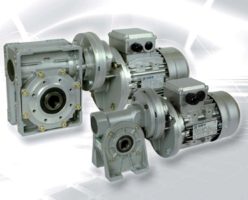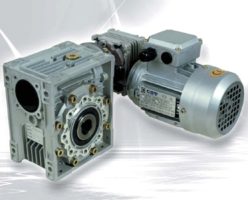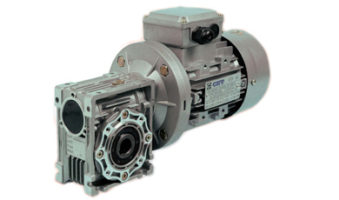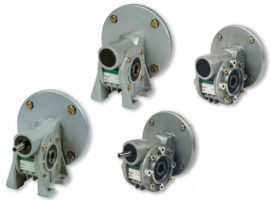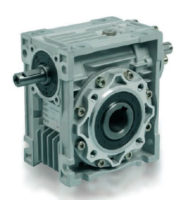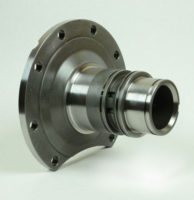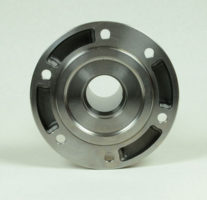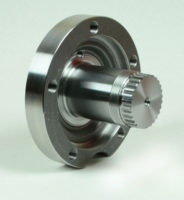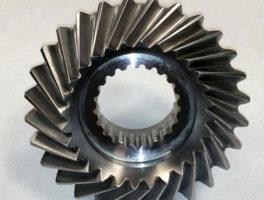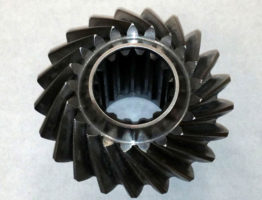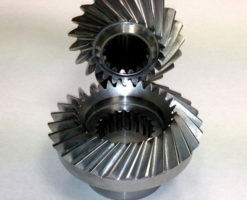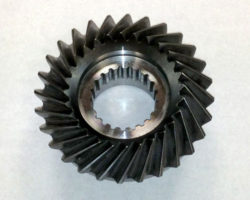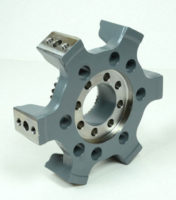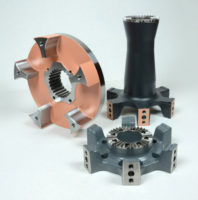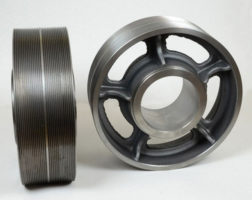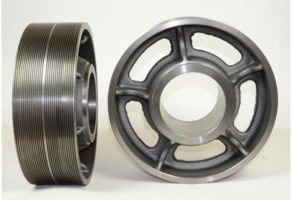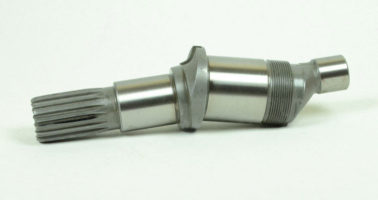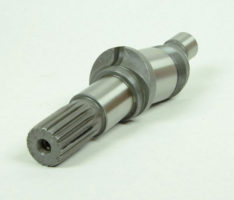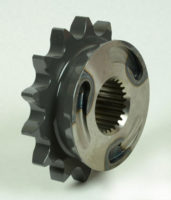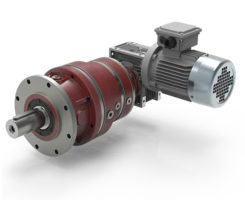
CHIARAVALLI GROUP
BRAND
GIFLEX
®
SERIES GE-T
with FLEXIBLE SPIDER
GIFLEX®
GE-T COUPLINGS with FLEXIBLE SPIDER
ACCURATE EXECUTION
JL
JA+JL
JA
JA+JL
SYMBOLS
Tk n
= coupling maximum torque (Nm)
Tk max
= coupling maximum torque (Nm)
Tk w
= torque with coupling inversion (Nm)
TLN
= driven side operating torque (Nm)
TLs
= driven side static torque (Nm)
TAs
= motor side static torque (Nm)
Ts
= plant static torque (Nm)
PLn
= driven side operating power (Nm)
nLn
= driven side rotating speed (r.p.m)
St
= temperature factor
JA
= inertia moment drive site
JL
= exit side
SA
= motor side impact factor
SL
= driven side impact factor
Sz
= start-up factor
MA
= control side mass factor
ML
= driven side mass factor
INDICATIVE VALUES FOR ADJUSTMENT FACTORS:
Name
Symbol
Definition
Temperature
St.
St.
1
1
1,4
1,8
factor
C°
-30° +40° +80° +120°
+30°
Start-up
Sz.
Number of start-ups per hour
Factor
Start-up/hr.
100 200 400 800
Sz.
1
1,2
1,4
1,6
Impact factor
S
A
/S
L
S
A
/S
L
minor start-up impacts
1,5
medium start-up impacts
1,8
major start-up impacts
2,2
COUPLING SELECTION AND SIZING CRITERION
Couplings are sized on the basis of the physical laws of me-
chanics and the resistance of the materials and also com-
plies on the provisions established in the DIN 740 standards
Sheet 2.
the coupling is selected on the basis of the criterion, whi-
ch establishes that the maximum permitted stress is never
exceeded even in the most demanding operating condi-
tions. It follows that the nominal torque declared for the
coupling must be compared with a reference torque that
takes into account the overloads due to the way the load is
exerted and the operating conditions.The reference torque
is obtained by multiplying the operating torque by a series
of multiplying factors depending on the nature of the load
or on the ambient temperature conditions.
LOAD DUE TO NOMINAL TORQUE
The permitted nominal coupling torque TKN nust apply for
any operating temperature value equal to or greater than
the driven side operating torque TLN.
TLN = 9549
( PLn ) [Nm]
nLn
The following condition must be satisfied , where St repre-
sents the temperature factor, to take into account overloads
due to the operating temperature for the coupling
Tk n = > TLN * St
START – UP LOAD
The drive motor delivers a drive torque during the start-up
transient period which is a multiple of the nominal torque
and depends on the way the masses are distributed.
A similar situation occurs in the braking phase therefore, this
two phases are characterised by torque impacts that have
an intensitive which depends on the distribution of the mas-
ses on the drive side MA and on the driven side ML, as well
as the frequency of the number of start – ups on which the
start – up factor Sz depends .
The static torques for the drive side and the driven side are
expressed by the following relationships:
-
drive side
T
S
= T
AS
*M
A
*S
A
-
driven side
T
S
= T
LS
* M
L
* S
L
MA and ML are assumed to be equal to 1, to first approxi-
mation, and if the distribution of the masses is unknown. The
SA factor can be assumed as being equal to the relationship
between the start – up torque and the nominal torque in the
case of drives based on an electric motor.
LOAD CAUSED BY TORQUE IMPACTS
The permitted nominal coupling torque TKN max must be
equal to or greater than the start-up torque increased by the
temperature factor and by St and by the start-up factor Sz
for any operating temperature value.
Tk n max > TS * St * Sz
Consult the CHIARAVALLI Trasmissioni Technical Depart-
ment for operating conditions that foresee periodic variation
or torque inversions, as well as alternate tortional stresses.
5
SERVICE FACTORS:
Load condition
Operating conditions
Type of Drive
Electric motor
Diesel engine
UNIFORM
Regular operation without
impacts or overloads
1,25
1,5
LIGHT
Regular operations with
minor and infrequent
impacts and overloads
1,50
2,0
MEDIUM
Irregular operation with
medium overloads for a
short duration and frequent
but moderate impacts
2,0
2,5
HEAVY
Markedly irregular operation
with very frequent impacts
and overloads and of major
intensity
2,5
3,0
12



